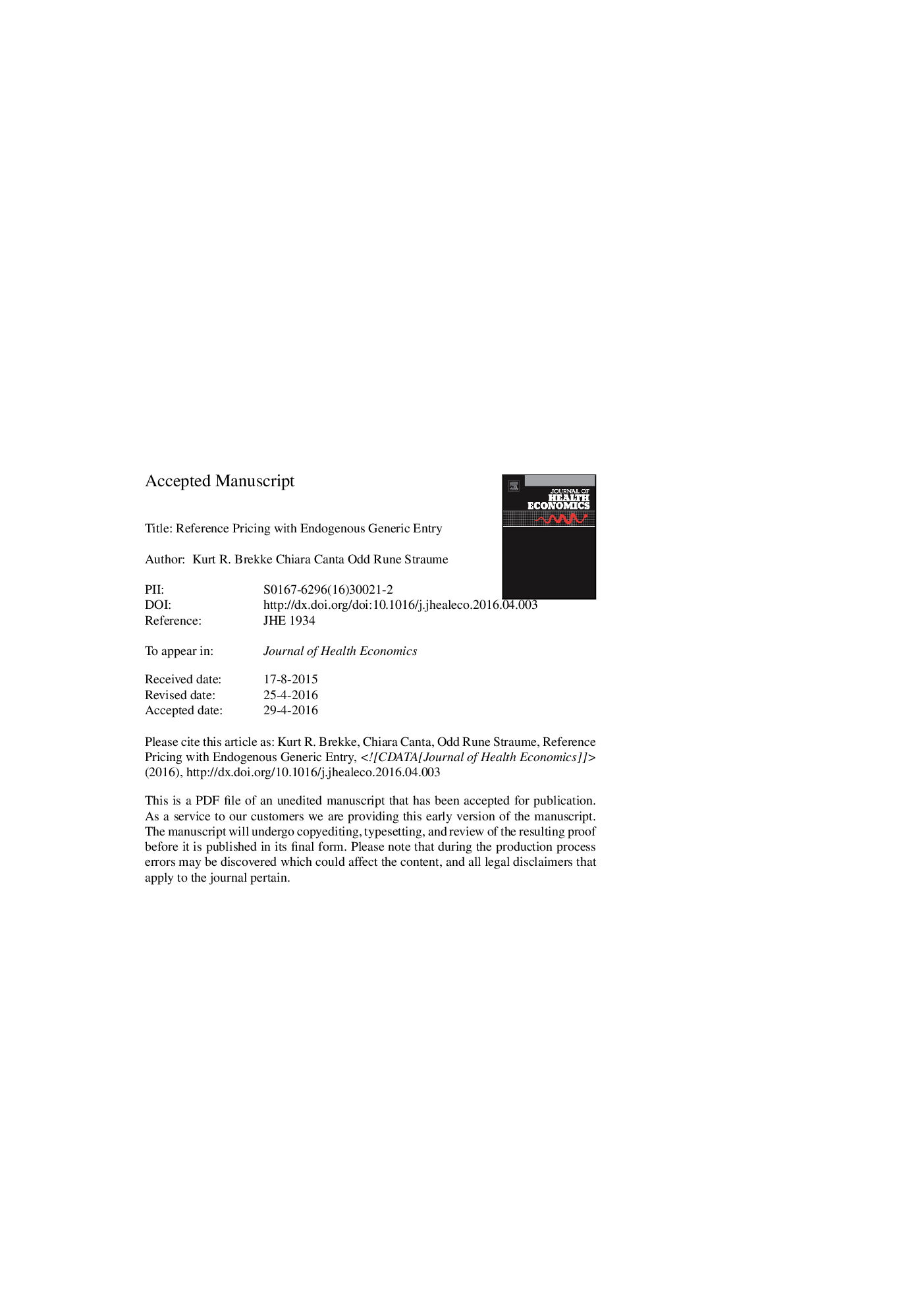| Article ID | Journal | Published Year | Pages | File Type |
|---|---|---|---|---|
| 5100817 | Journal of Health Economics | 2016 | 45 Pages |
Abstract
Reference pricing intends to reduce pharmaceutical expenditures by increasing demand elasticity and stimulating generic competition. We develop a novel model where a brand-name producer competes in prices with several generics producers in a market with brand-biased and brand-neutral consumers. Comparing with coinsurance, we show that reference pricing, contrary to policy makers' intentions, discourages generic entry, as it induces the brand-name producer to price more aggressively. Thus, the net effect of reference pricing on drug prices is ambiguous, implying that reference pricing can be counterproductive in reducing expenditures. However, under price regulation, we show that reference pricing may stimulate generic entry, since a binding price cap weakens the aggressive price response by the brand-name producer. This may explain mixed empirical results on the competitive effects of reference pricing. Finally, we show that reference pricing may be welfare improving when accounting for brand preferences despite its adverse effects on entry and prices.
Related Topics
Health Sciences
Medicine and Dentistry
Public Health and Health Policy
Authors
Kurt R. Brekke, Chiara Canta, Odd Rune Straume,
